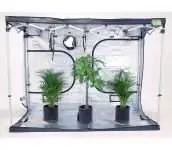If you want to cultivate plants, including cannabis or marijuana, in an indoor environment; you're probably going to be using a grow tent to support proper growth.
One thing you'll quickly learn is that buying a grow tent isn't enough to ensure a successful crop. The most important factor is providing the right conditions within your grow tent to promote growth.
A key part of this is relative humidity and the effect it has on plants. A grow tent dehumidifier is the best way to regulate humidity in this environment and is the option we recommend.
In this guide, we've taken a look at the best dehumidifiers for grow tents and have a recommendation for you.
Best Grow Tent Dehumidifier Reviews
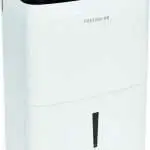
Frigidaire 50 Pint Dehumidifier
Best overall

Keystone 35 Pint Dehumidifier
Great alternative option
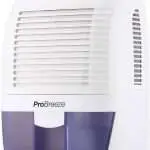
Pro Breeze Mini Dehumidifier
Best for small grow tents
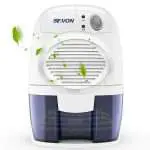
SEAVON Electric Dehumidfier
Great for small grow tents
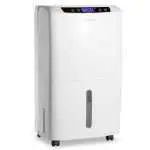
Waykar 40 Pint Dehumidifier
Great alternative option
Best Dehumidifiers for Grow Tents
1. Frigidaire 50 Pint Dehumidifier
This is a really heavy duty dehumidifier that can extract up to 50 pints of moisture out of the air in a single day. It only has a 17 pint bucket, though, so unless you fancy tipping buckets of water out several times a day, it might be better to use the continuous drain option. If you do decide to use the bucket, there's an automatic shutoff if the bucket fills, so at least you won't get flooded out.
You'll need to spend over $200 for this dehumidifier but for that, you get customized humidity controls, an auto restart function if there's a power outage, and Energy Star certification which means it's going to save you money on your utility bills. The dehumidifier also has the ability to operate at low temperatures, but let's face it, that's not really something you're going to need in a grow tent.
The one downside of this machine is that at 51 dBA it's a bit noisy - common to most larger machines. It's good at what it does, though, with many customers reporting they were surprised how quickly this dehumidifier made a difference. And you get 1 year full parts and labour warranty with your purchase.
The Frigidaire FFAD5033W1 is the best grow tent dehumidifier for most people.
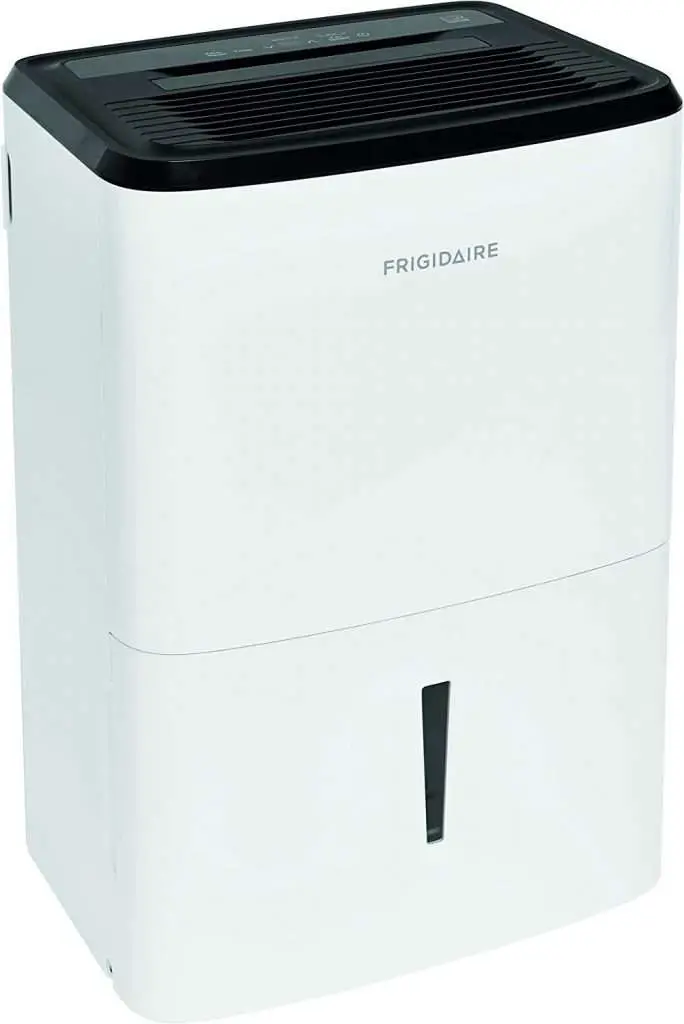
2. Keystone 35 Pint Dehumidifier
This dehumidifier is available in a number of size options from $165 to $220 and will work in a space up to 3,000 sq ft. It can extract 35 points of moisture a day, quite a bit less than the Frigidaire, and gives you electronic controls with a 24 hour timer, and a continuous draining option as well as a built-in tank. (However, it doesn't come with a hose; you'll need to buy garden hose to connect it up.) The tank can handle about a day's condensate, and there's an automatic shut-off if the tank gets full.
Again, you'll find this model is a bit more noisy than smaller dehumidifiers, at 55 dBA, but this noise level isn't high enough to be problematic - it's less than someone talking normally.
The Keystone comes with a 1 year warranty. There are reports of some machines giving up the ghosts within 18 months - they're definitely in the minority though. And most customers are extremely impressed by the machine's ability to extract moisture even from quite large spaces.
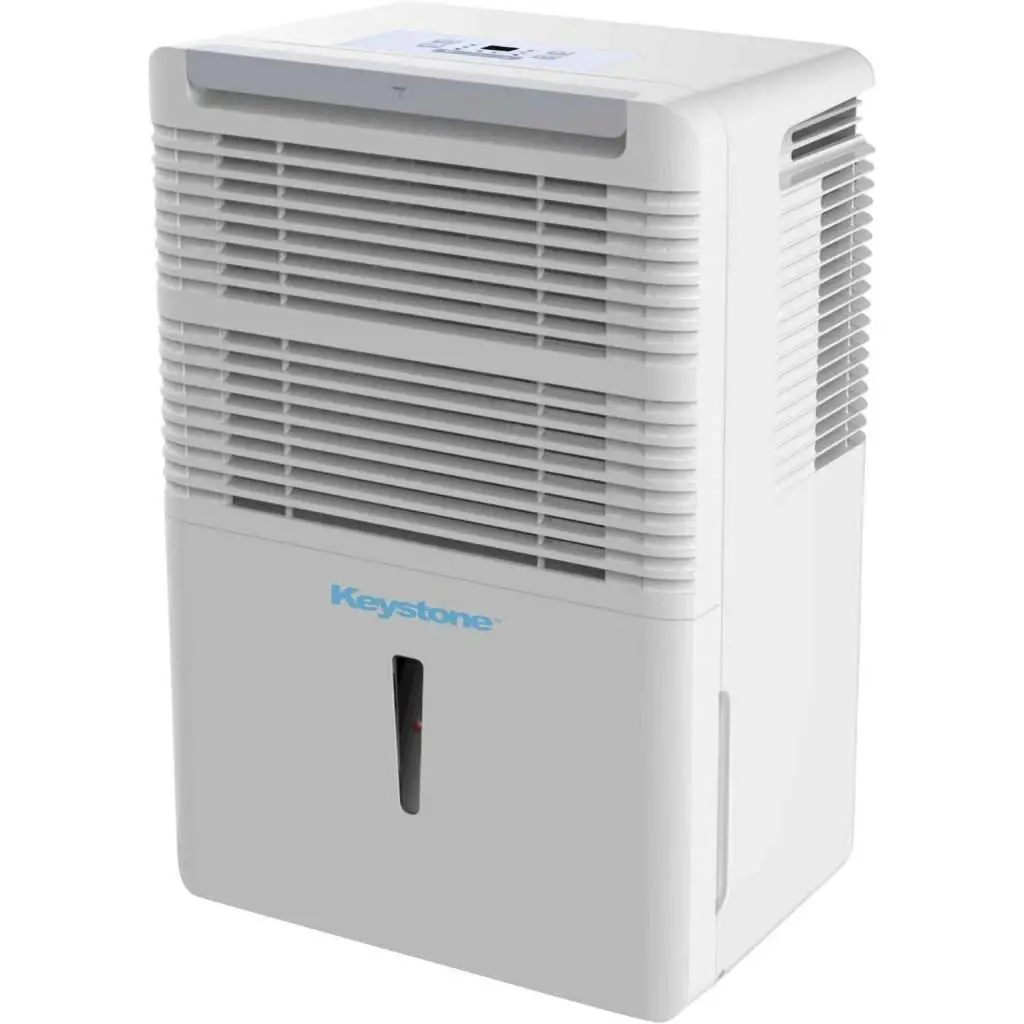
3. Pro Breeze Mini Dehumidifier
This is a great choice for smaller grow tents at about $80. It has a 52 ounce tank capacity, which represents a little less than three times its daily moisture removal capability. That means you can leave it for three days before you need to tip out the tank. But in line with most smaller dehumidifiers there's no continuous drainage option, so this is really only suitable for the casual home grower. It's recommended for spaces up to 250 sq ft.
There's an auto shut-off, so you don't have to worry about flooding if the tank overfills, and the Peltier technology makes this a very quiet machine. It also has extremely low power consumption, claiming just 23 watts, though it doesn't have the Energy Star certification. And it will operate in temperatures from 59F to 86F, so the top end is just about where you want your grow tent to be.
The one problem with the Pro Breeze is that some customers say it's difficult to remove the drain plug, particularly if you have wet hands.
The unit comes with a 12 month warranty.
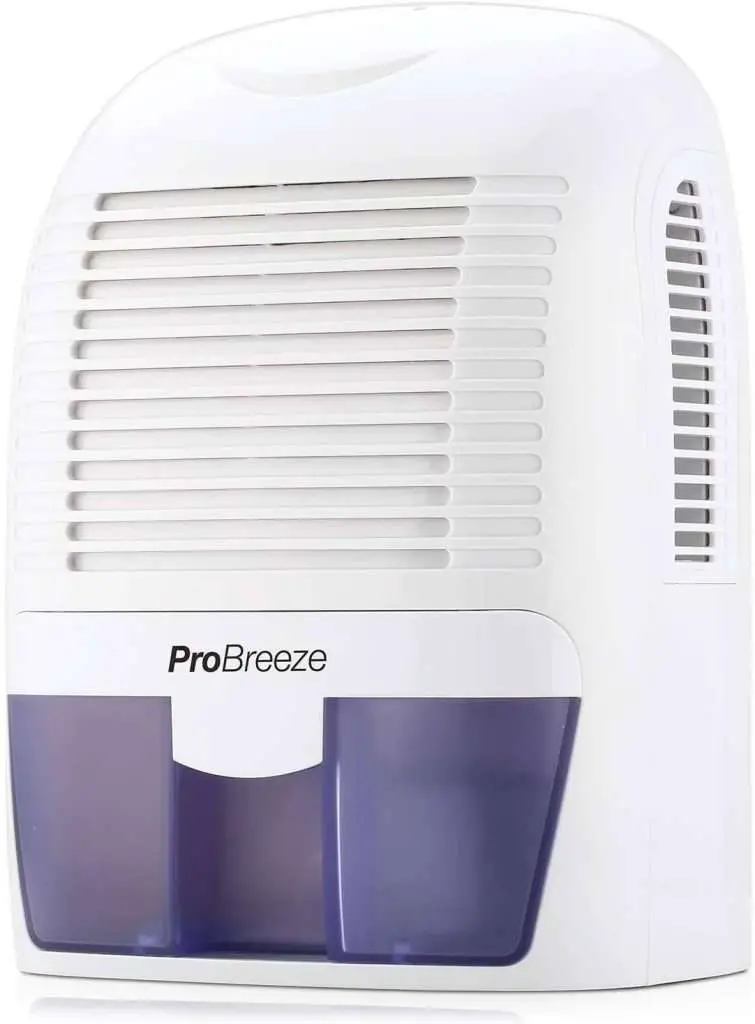
4. SEAVON Electric Dehumidifier
You'll pay around $60 for the SEAVON, another small compact dehumidifier that should suit home growers. It's very similar in design and specification to the ProBreeze though it doesn't have quite such good energy efficiency; still, at 40 watts, you're going to be using less than 1kW a day, not really a big deal.
This dehumidifier will extract up to 9 oz of moisture daily, and the tank lets you run it for nearly two days before it needs emptying even at maximum extraction capacity. It's light and portable, weighing only 2 1/2 lbs, and the Peltier technology used makes it one of the quieter machines - like the Pro Breeze.
Like most mini dehumidifiers it works best between 59-86F, the top end being just about right for a grow tent.
It's a reliable machine which can run continuously with no problem and comes with a 12 month warranty.
Like the ProBreeze which we also recommend, the one glitch that many customers find annoying is the drain plug, which can be fiddly to remove.
5. Waykar 40 Pint Dehumidifier
Let’s get back to the big capacity machines with the sub $200 Waykar. It will clear 40 pints of moisture a day, but the water tank is far too small (in our view) for this level of capacity, so you'll want to use it in continuous drainage mode. Unlike the other machines it comes with a drain hose provided. It can dehumidify up to 2,000 sq ft in area.
You have a lot of control with the Waykar, including timer settings and target humidity levels. If you use the tank, it has auto shutoff, and will auto-restart if there's a power outage. The main downside is that it does hum rather loudly according to some customers.
Waykar provides a 30 days money back guarantee and a 1 year warranty, which you can extend to two years.

Benefits of Using a Dehumidifier for a Grow Room
If you cultivate plants indoors, you're going to need a grow tent. But you're also going to need to control conditions in your grow tent - and that applies to the humidity as well as the temperature.
Too much humidity can allow mold and mildew to ruin your crop. Of course, you're going to be watering your plants, so there will moisture at their roots. What you don't want is that moisture getting into the air. Not only will harmful mildews love the extra humidity, your plants may start absorbing moisture from the air rather than through their roots, and that will mean they're not getting as many nutrients as they should.
The most important aspect of cannabis growing is that the best plants require a continuous intake of gallons of water. When the humidity in a grow tent is high, plants will use their leaves to absorb moisture from the air around them. When the humidity is low in a grow box, they absorb water through their roots instead.
Having control of the moisture levels in your indoor grow tent allows you to fine tune your plants’ nutrient intake. This will improve the development of your cannabis crop, resulting in strong, healthy and leafy plants. Controlling the moisture in your grow room with the best grow room dehumidifier is also important for preventing problems like mildew, bud root, and leaf rot.
White powdery mildew is one of the most common problems encountered when growing cannabis in high moisture environments. This fungal disease can be difficult to remove as cannabis plants grow best in humid environments. This is why using a grow room dehumidifier and ensuring proper airflow in your grow tents is so important.
Where to Place Dehumidifiers in Your Grow Area
Depending on the size of your grow area, you’ll need to consider three factors when considering the placement of your dehumidifier(s). These factors are efficiency, failure, and accessibility.
Good efficiency requires that you place your dehumidifier in a way that properly covers all your plants without wasting any energy.
You also have to consider dehumidifier failure. Maintaining the best moisture level in the grow area is very important in cannabis cultivation. This means you need to ensure that if one grow room dehumidifier fails, there is another dehumidifier that can handle the increased load without affecting crop health.
You should also ensure that your dehumidifier(s) is easily accessible. You will need to check on it occasionally after installation to make sure it is working properly.
What Should the Humidity be During Flowering?
Humidity is a measure of how much water or moisture is present in the air. There are a few ways to measure air moisture content including relative, specific and absolute humidity. As a grower, you only need to concern yourself with relative humidity (RH) inside your grow tent.
Relative humidity is a measure of how much moisture is in the air compared to the maximum amount of water that the air can hold at a given temperature. The best relative humidity for a grow tent during marijuana's flowering stage is 40 - 50%. To produce more cannabis resin, you could lower the humidity further by setting your dehumidifer to 40 - 45% during the final two weeks of flowering.
Is a Dehumidifier for Grow Tent Expensive to Run?
Energy efficiency is a big one, particularly if you're growing at scale. If you need three dehumidifiers, running 24/7, that's 8,760 hours a year. At 300 watts an hour, each one could cost you nearly $400 a year. That's $1,200 a year of your money spent on dehumidifiers, before any other costs.
So, you should look carefully at the energy certification of any dehumidifier you're considering. Just cutting your energy consumption by 5% would save you $60; cutting it by 10% would save you $120.
Dehumidifier Reliability
You also need to think about reliability. If your dehumidifier breaks down, you don't have a lot of time to source a replacement before the humidity shoots up - and your plants will suffer. If you're a home grower, you may be okay - but if you're growing in any scale, you need to be sure you are protected. You might want to consider using two humidifiers rather than a single unit; that way you're protected if one of them, for whatever reason fails.
Reliability is also a big reason that you want a dehumidifier that has auto restart, so if there's a power outage, it will start up again - preferably with your custom settings in memory. You should also carefully consider the warranty and the manufacturer's reputation for customer service.
You may be tempted to economize on dehumidifiers - the bigger machines cost significant money. But remember that your crop is worth money. How much would it cost you if you lost all your plants due to a humidifier breakdown? If it's more than you would save by buying an inferior humidifier, you're making the wrong decision.
We cover dehumidifier reliability in more detail in our dehumidifier guide.
Final Verdict
Buying a dehumidifier for a grow tent, even if you're just a home grower for your own use, is more like a business decision than buying a dehumidifier for your home. You're going to be using the machine 24/7, so energy costs are much more of a factor, and you're going to need more reliability. After all, if your bedroom dehumidifier breaks down, you're just going to be uncomfortable for a while. If your grow tent dehumidifier breaks down, all your plants might die.
The good news is that you have a whole load of ways to keep the humidity in your grow tent under control - and they're all affordable.
Each of these dehumidifiers is a great choice but the best dehumidifier for grow tents is the Frigidaire FFAD5033W1.
Resources:

